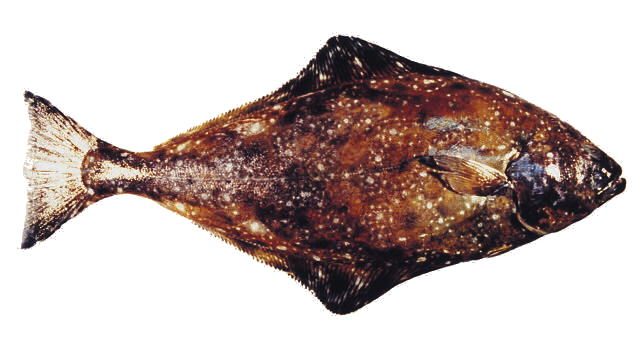| Pleuronectidae (Righteye flounders), subfamily: Pleuronectinae |
| 258 cm TL (male/unsexed); 267 cm TL (female); max.weight: 363 kg; max. reported age: 55 years |
|
demersal; depth range 0 - 1200 m, oceanodromous |
| North Pacific: Hokkaido, Japan and the Sea of Okhotsk to the southern Chukchi Sea and Point Camalu, Baja California, Mexico. |
|
Dorsal spines (total): 0-0; Dorsal soft rays (total): 90-106; Anal spines: 0-0; Anal soft rays: 69-80; Vertebrae: 49-51. Dorsal origin above anterior part of pupil in upper eye, generally low, higher in middle. Caudal spread and slightly lunate. Pectorals small. |
| Found on various types of bottoms (Ref. 2850). Young are found near shore, moving out to deeper waters as they grow older (Ref. 6885). Older individuals typically move from deeper water along the edge of the continental shelf where they spend the winter, to shallow coastal water (27-274 m) for the summer (Ref. 28499). Feed on fishes, crabs, clams, squids, and other invertebrates (Ref. 6885). Utilized fresh, dried or salted, smoked and frozen; eaten steamed, fried, broiled, boiled, microwaved and baked (Ref. 9988). |
|
Not Evaluated
(Ref. 96402)
|
| harmless |
|
Source and more info: www.fishbase.org. For personal, classroom, and other internal use only. Not for publication.
Page created by Jen, 05.08.02,
php script by kbanasihan 06/09/2010 ,
last modified by
dsantos, 20/08/10

